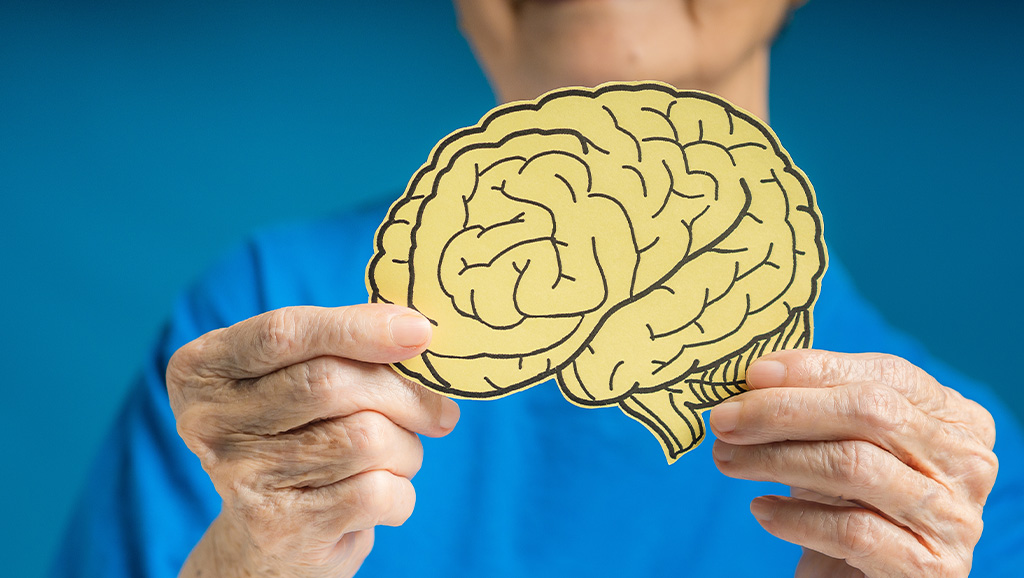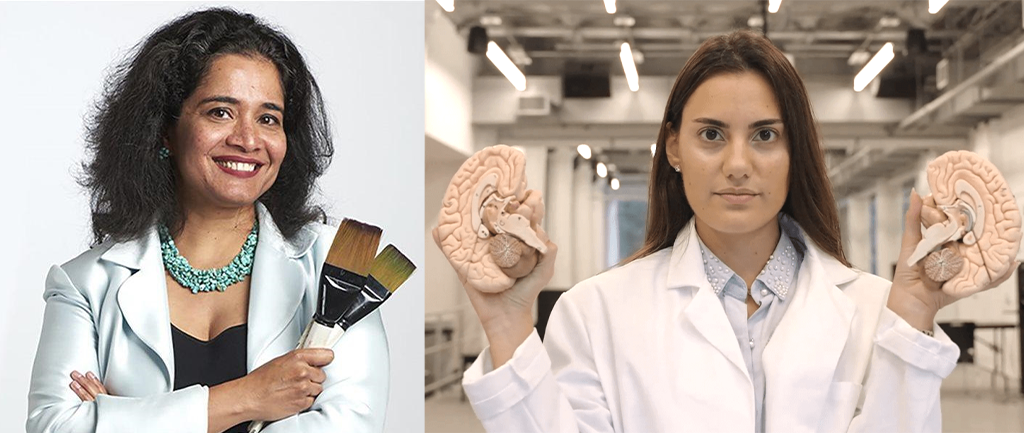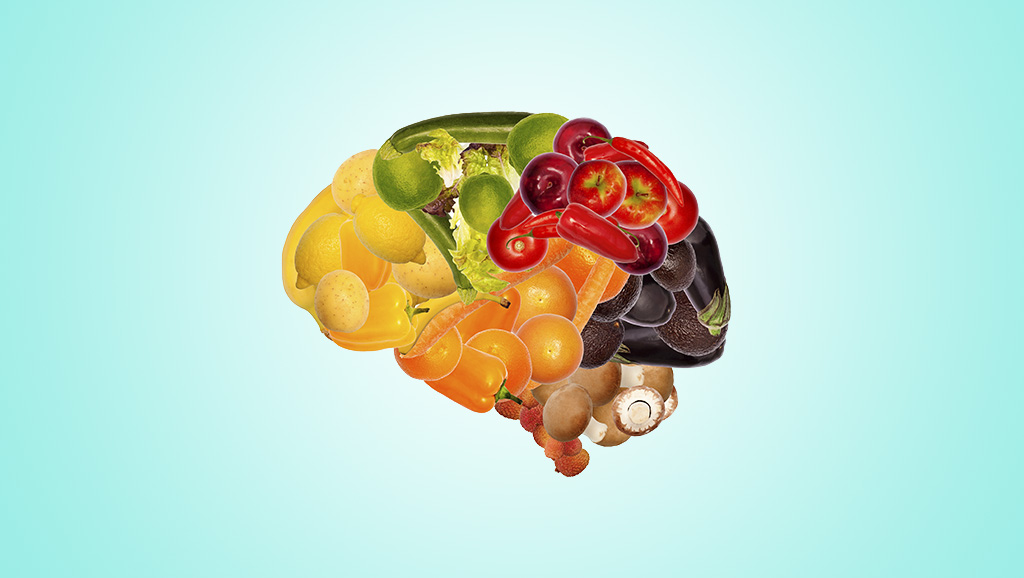News & Insights
Could Music Therapy Ease the World’s Dementia Crisis?

For Wendy, diagnosed with frontotemporal dementia six years ago, singing weekly with family is the lifeline that tethers her to reality. “She feels most alive when she’s singing,” says her cousin, Susan Magsamen.
For Henry, a nursing home resident with advanced dementia whom we meet in a 2014 documentary, a playlist of music from his past jolts him from a nonresponsive, slumped-over state to a finger-snapping, scat-spouting jive master, alert, engaged, and coherent.
Art, a participant in a clinical trial testing music therapy for mild cognitive impairment, finds his rhythm with a shaker and vocal improv during a session at the Louis Armstrong Center for Music and Medicine at Mount Sinai-Union Square in New York. “Memory can kick my butt all it wants but it ain’t gonna take my music from me,” he says afterward, in a video shared by the study’s lead investigator, Joanne Loewy.
The study that Art participated in is part of a new wave of research taking a rigorous look at the therapeutic potential of music to help meet the public health crisis of dementia, in all its insidious forms. Music therapists are partnering with behavioral psychologists and research neuroscientists to try to nail down not only if engaging with music can improve symptoms or stave off cognitive decline, but how and why. It’s part of a broader effort to move the field beyond anecdotes and piecemeal research and develop evidence-based music interventions to harness the healing potential of music in meaningful ways—and to scientifically document the effects.
Parsing a Universal Experience
Anecdotal evidence for the powerful effect of music on memory and memory disorders abounds. We’ve all experienced how memories can flood in when we hear a song from our youth. Or maybe we’ve witnessed someone come alive when they play an instrument or listen to particular music. Purely through social observation, we can see how music—or more precisely, the right music—can shift perceptions, lift moods, foster connection, and improve our sense of well-being. But what is the actual evidence that music can be a tool against Alzheimer’s and other types of dementia?
By all accounts, it’s no simple question. While preliminary research has laid the groundwork, fundamental gaps persist in understanding what kind of music intervention does what in which groups of people. In the US, federal funding is starting to trickle in to underwrite the kinds of rigorous studies the field needs to really move forward.
The question is complicated partly because of all the nuances around both “music” and “dementia.” The latter comes in many forms (Alzheimer’s is only one), and exists on a spectrum from mild cognitive impairment (MCI) to severe dysfunction. That alone makes it unlikely that any one thing would work at all stages the same way. Someone with MCI might use music therapy to try to enhance and preserve cognitive function, like Art in the Mount Sinai study. For Henry, whose impairment was more advanced, music unlocked something that engaged his attention and got him moving and talking.
Then there’s the music component. What kind of music? How is it presented? Live or recorded? Is listening to music enough, or should we engage people in creating music? What about learning an instrument? How does singing fit into it? How long do we do it? What’s the right “dose” of music, and what form should it take to be most effective as a therapeutic tool?
Where’s the Data?
“The data just isn’t there” to answer those types of questions, says Coryse St. Hillaire-Clarke, program director in neuroscience at the National Institute on Aging (NIA) and a member of the National Institute of Health’s music and health working group. She points to a 2020 report from the federal Agency for Healthcare Research and Quality that found the evidence insufficient to draw conclusions about the benefits of music therapy for behavioral symptoms such as agitation, anxiety, depression, or quality of life, based on the 35 studies it examined,
“In order to draw definitive conclusions about the role of music in dementia, including Alzheimer’s disease, we would need to improve upon the rigor of the design of the studies,” says St. Hillaire-Clarke.
Even the biggest proponents of music therapy acknowledge there are gaping holes in the evidence for its use in dementia. “Everywhere, but also nowhere” was how Magsamen described the data, in line with scientific understanding of neurobiology and the arts generally. As director of the Johns Hopkins International Arts + Mind Lab (IAM Lab), she has pored over the research. Some very good studies have been done, she says, but a lack of consistent funding from federal or philanthropic sources has hobbled the field, leaving researchers who want to study the question left largely to their own. That means studies tend to be smaller or less rigorous in terms of data analysis, and use diverse methodology and interventions that may not be reproducible.
To move the needle on the data dearth, NIH has committed $20 million over five years to fund a range of pilot studies through the Sound Health Initiative. The National Endowment for the Arts (NEA) and the Renee Fleming Foundation are partners in the effort, the first chunk of funding for music research from the NIH.
“It’s the first drop in the bucket to get things going, and the quality of the science has to improve with the funding,” says Julene Johnson, a cognitive neuroscientist at the University of California San Francisco (UCSF) who is leading a study funded through the Sound Health Initiative.
Music Improv to Improve Cognition?
The UCSF team is focused on developing and rigorously testing the cognitive effects of piano-improvisation training in older adults with and without MCI. “The process of learning to improvise involves a behavioral process called self-regulation,” says Johnson. “You’re learning how to respond to somebody else in the group who’s playing. You’re learning to respond to ideas. You have to have cognitive flexibility. You have to monitor yourself. You’re generating new ideas, and you’re kind of entering into a state of flow that we think involves activating prefrontal cortex networks,” Johnson says. “Our ultimate goal is to help participants increase their engagement with cognitively demanding activities.”
They’re also looking at the brain mechanisms underlying any change. Their hypothesis is that improvisation training will lead to improvements in self-regulation, compared to people without such training, and will be associated with specific changes in prefrontal brain networks and, ultimately, cognitive engagement. A subset of study participants will undergo functional brain scans to track brain changes. The work builds on research by UCSF neuroscientist and former Dana Foundation grantee Charles Limb to understand how the brain gives rise to high-level musical creativity, in which he’s used improvisation as a prototypical creative behavior to build a functional neural model of human creativity.
Finding the Right Recipe
Improvisation is also incorporated into the music therapy sessions in the Mount Sinai clinical trial, which is trying to drill down into the details of the music itself. Joanne Loewy, a music therapy researcher and director of the Louis Armstrong Center for Music and Medicine, is the co-principal investigator of the privately funded study. “It’s not just singing any old song,” she says. How music is delivered matters. Its personal salience to the person being treated matters. Every technical aspect of the music itself—timbre, tone, pitch, melody, rhythm—is likely to affect results. Loewy likens it to chocolate, which comes in myriad varieties. “The recipe is really important to the people eating it.”
To find the right recipe for each person, Loewy’s team conducts an intensive assessment—a kind of audio Rorschach test, as she puts it, to tune into the types of music each person responds to. (She pans her camera in a Zoom interview to show a vast array of musical instruments from around the world.) The researchers assess which types of instrumentation each patient is attracted to, as well as the time period, artists, and individual songs. They dig deep to understand the patients’ associations with those tunes, the feelings and images they evoke—that’s critical, she says, because people can also have negative associations with music. Based on the assessment, the team creates a personalized playlist of music that is engaging and positively reinforcing, capped at both ends with a particularly meaningful selection that Loewy calls “song of kin.” It might be the person’s wedding song, or a song from their formative years, something that connects with them deeply.
“Music therapy research tells us that patient-preferred music has the most strength for change, but we take that a step further,” she says. “It’s not just throwing together a playlist. It’s actually characterizing the aspects and qualities of the music that will engage the listeners.”
That engagement seems to be key, says Mary Sano, a Mount Sinai neuroscientist who heads the Alzheimer’s Disease Research Center and is co-investigator on the study. “Maybe music or song are ways to stimulate neural activity broadly and that might leave you open to laying down new associations,” she speculates. “That’s a real leap of faith” based on the data we have today, she says, but is a legitimate scientific question worth investigating. “If we knew how external stimulation helped the brain to be more plastic, which we know it is, that could certainly be a path to better interventions.”
‘Earworms’ May Explain Memory Effects
Understanding why music triggers memories so powerfully has been Petr Janata’s life work. Now with funding from the Sound Health initiative, the University of California-Davis neuroscientist is investigating how “earworms,” those bits of music that replay involuntarily and sometimes incessantly in our brain, contribute to the creation and consolidation of memories, and how music serves as a cue for retrieving associated memories even when memory structures of the brain involved in effortful memory retrieval are damaged, as in Alzheimer’s disease. His hypothesis is that earworms, which he calls involuntary repetitive musical imagery (IRMI), help to consolidate memories not only for the music itself, but also for non-musical information associated with the music. The work helps unravel a possible mechanism underlying the sometimes profound effects of music on even advanced dementia.
Music therapists like Connie Tomaino, director of the Institute for Music and Neurological Function, are putting these concepts into practice. Tomaino, who’s been working with Alzheimer’s patients for 40 years and is writing a “best-practices” guidebook on music therapy, suggests linking a particular soundtrack consistently with a particular person, so the music can be used as a cue to help a memory-impaired person remember their loved one.
Janata thinks it’s worth a try – with a caveat. “I love engaging with the music therapy communities because they’re very eager to incorporate what’s known from the science into practice. But I think that there is certainly work to be done. What are the mechanisms by which these memories form? And for what type of information is it most useful? Then one can design and try out interventions that are targeted with these mechanisms in mind.”
Immense Potential
The potential impact of a safe, low-cost, nonpharmacological intervention for dementia is enormous. An economic analysis by the accounting firm KPMG estimated the annual cost of music therapy at about $800 a year (in 2020) vs. an average of $3,500 yearly for medications to treat dementia. Today in the United States alone, an estimated 6 million people over age 60 have Alzheimer’s disease and related dementias, and the number is rising rapidly amid an already overburdened nursing-care system. The annual cost to society is estimated to be $290 billion.
The NeuroArts Blueprint, an initiative of the IAM Lab at Johns Hopkins University and the Aspen Institute, commissioned KPMG to estimate the economic impact of music therapy on Alzheimer’s disease. If 30 percent of people with Alzheimer’s were to engage regularly with music, nearly a billion dollars would be added to the U.S. economy, the firm estimated. (Read the full report.)
New approaches to dementia care are desperately needed. The one treatment currently approved for Alzheimer’s is controversial because of its high cost and marginal efficacy, and other drugs that are used to treat agitative symptoms come with strong “black box” warnings.
“We’re certainly not saying we’re curing the disease [with music],” says Magsamen, the co-director of the NeuroArts Blueprint and a primary force behind the move to recognize the therapeutic value of arts-based therapies. “We’re looking at ways to continue to help manage it with more integrity and more value. That has implications on patients, but also on their families and the institutions that they’re in.”



